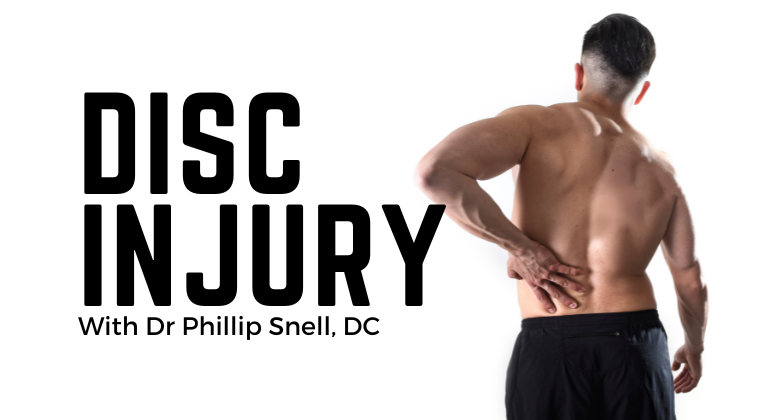Managing the Disc-Injured, Flexion-Intolerant Low Back
Managing the Disc-Injured, Flexion-Intolerant Low Back
Managing lumbar disc injury in the clinic requires an understanding of the mechanics of flexion intolerance. In this course, you will learn the necessary structural and functional assessment and rehabilitation techniques to fix the complaining disc.
Couldn't load pickup availability

What You Will Learn
- Epidemiology and Public Healthcare Costs in Low Back Pain
- Causes of Structural Injury in the Lumbar Spine
- Structure and Function in Low Back Pain
- How to view Low Back pain through a Neurocentric Lens
Objectives
After this course, the learner will be able to:
- Identify common fractures and dislocations to both the upper and lower limb.
- Utilize roentgenometrics to identify subtle fractures.
- Assess MRI images for supraspinatus tears and SLAP injuries.
- Assess MRI images for meniscal and ACL tears.
Who This Course Is For
- Learn effective exercise interventions to manage the flexion intolerant lumbar spine
- Learn a neurocentric approach to assessment and management of low back pain
- Understand how to differentiate between the injured disc vs. other commonly presenting back injuries
- Learn safe ways to build strength and agility in the recovering flexion-injured spine
- Develop familiarity with specific exercise interventions to manage pain
- Learn on your own time! 8+ Hours of video with built-in learning self-assessments
Curriculum
FOLLOW THE MONEY: Epidemiology and Public Healthcare Costs in Low Back Pain
- Download Course Notes-Clinical Companion to FixYourOwnBack
- Lesson 1: The Numbers
- Quiz-Lesson 1
- Lesson 2: Pain Science Primer
- Quiz- Lesson 2
ISSUES IN TISSUES: Causes of Structural Injury in the Lumbar Spine
- Lesson 3: Imaging and Injury Mechanisms for the Lumbar Disc
- Quiz-Lesson 3
- Lesson 4: Factors Associated With Painful Discs
- Quiz-Lesson 4
- Lesson 5: A Deeper Look at PsychoSocial Aspects of Low Back Pain
- Quiz-Lesson 5
THE DANCE: Structure and Function in Low Back Pain
- Lesson 6: Myofascial Adaptations to Functional Demand
- Quiz-Lesson 6
- Lesson 7: Cutaneous Neuro and a "Unified Field Theory" of Low Back Pain
- Quiz-Lesson 7
A NEUROCENTRIC LENS: Seeing Low Back Pain in a Different Light
- Lesson 8: History and Initial Physical Exam
- Quiz- Lesson 8
- Lesson 9: The 3 Hats of MSK Evaluation
- Quiz-Lesson 9
- Lesson 10: Physical Examination 1
- Quiz-Lesson 10
- Lesson 11: Physical Examination 2
- Quiz-Lesson 11
- Lesson 12: IVF Management
- Quiz-Lesson 12
- Lesson 13: Investigating Extension Intolerance
- Quiz-Lesson 13
- Lesson 14: Interpretation of Exam and Review of Findings
- Quiz: Lesson 14
HOW TO MOVE AWAY FROM PAIN: According to FixYourOwnBack Method
- Lesson 15: Reprogramming the Faulty Movement With the Hip Hinge
- Quiz-Lesson 15
- Lesson 16: End of Visit 1
- Quiz-Lesson 16
- Lesson 17: Building Endurance of Spinal Stabilizers
- Quiz: Lesson 17
- Lesson 18: Video Review of McGill's Big 3
- Quiz: Lesson 18
- Lesson 19: Establishing Mobility in the Hips and T-spine
- Quiz: Lesson 19
- Lesson 20: Mastering Rotary Stability
- Quiz: Lesson 20
- Lesson 21: Building Strength in the Spine
- Quiz: Lesson 21
- Lesson 22: Careful Addition of Power to the Rehabbed Disc
- Quiz: Lesson 22
- Lesson 23: BONUS! Powerlifter Chris Duffin on Powerlifting While Avoiding Disc Injury
- Quiz: Lesson 23
Instructor

Dr Phillip Snell
Author, Educator, Chiropractic Physician
Dr. Phillip Snell holds an adjunct faculty position at the University of Western States and has a clinical chiropractic practice in Portland, OR. He lectures internationally to other medical providers on the use of exercise interventions and manual therapy in the treatment of lumbar disc herniation and other orthopedic conditions. He leverages deep training in many rehab schools of thought with a heavy leaning toward the DNS work of Pavel Kolar from the Czech Republic, the work of Stuart McGill, the work of Gray Cook, and a great deal of work in the use of kettlebells for training. Dr. Snell also utilizes a variety of manual methods including Fascial Manipulation, myofascial trigger point therapy, positional release and neural dynamics. Dr Snell is the founder of MyRehabExercise, FixYourOwnBack, and The Neurocentric Approach.


